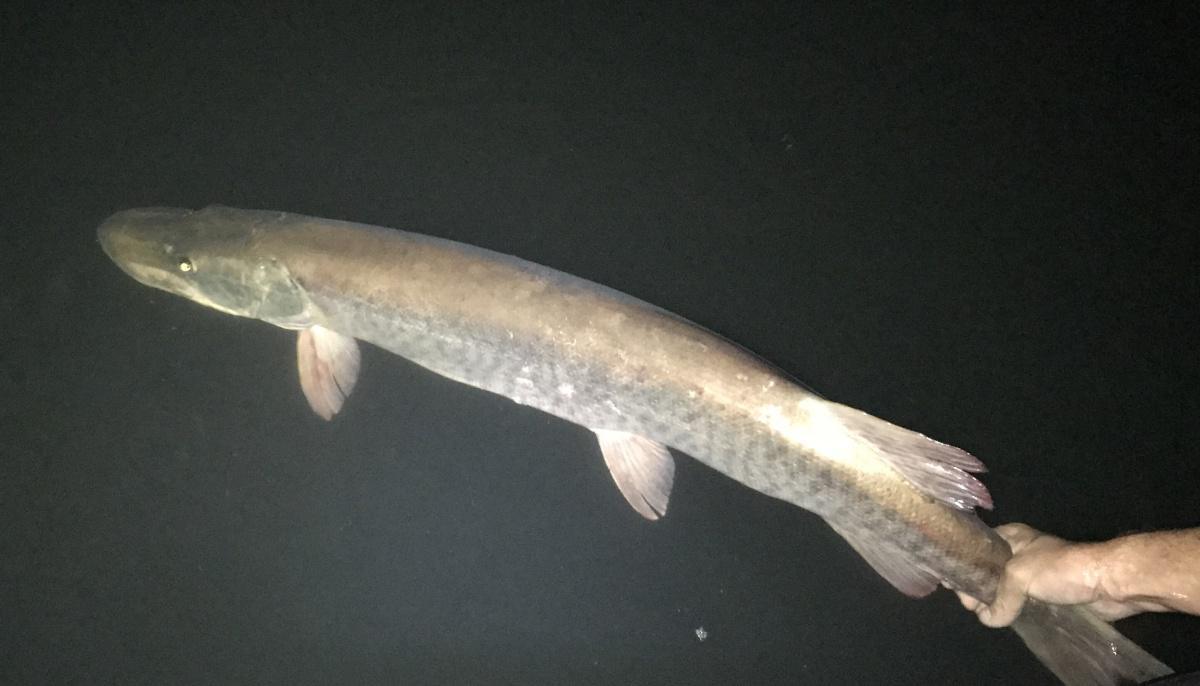There is no question that big rubber baits put muskies in the net.
These goliath sized presentations move a ton of water and can generate strikes from both active and neutral muskies. In spite of their success, these chunky lures leave most novice and beginner musky anglers scratching their head asking, "how do I even use this thing?" So lets look at the basics of how to effectively use big rubber.
Lures like Bull Dawgs and Medussas can range in weight from 8oz to over a pound, depending on the make and model, so to effectively use these lures you'll need the right tools for the job.
I recommend a heavy action rod with a fast tip and a strong backbone. These specifications will allow you to cast and use these baits with relative ease. The operative word here is ease. Having the appropriate rod for big rubber alleviates some of the physicality of use, allowing for less strenuous operation and more dialed in presentation.
If your budget allows for more than one rod, having a rod taylored solely for big rubber is a great option. Many rod makers offer models in the XX Heavy and even XXX Heavy classes that make throwing these behemoths a breeze.
Selecting the appropriate reel for big rubber depends on retrieval speed. Lower geared reels can be used, but if your goal is to quickly rip big rubber baits, a minimum gear ratio of 6:3.1 is recommended.
Line test is always a consideration, but with most musky anglers adopting 80lb super braids, it is of little concern. You may opt to have your rubber bait rod rigged with 100lb braid for a little extra strength and depth, but as long as you are rigged with 80 lb super braid everything should operate smoothly.
Big rubber musky lures vary greatly in color, tails, weighting and design, but mostly operate in the same fashion. They sink when thrown, and as the bait falls the tail undulates.
How then do we incite a musky to hit this falling piece of rubber? We have to impart action to the bait with each cast. There are more than few ways to retrieve rubber baits, but ripping is the most common and is highly effective for beginners and pros.
The basic approach to ripping rubber lures is as follows: cast out your lure and let it sink momentary, then firmly sweep your rod tip across your body in a side ways lateral motion. This sweeping action will pull the lure through the water displacing the area around it as well as making the tail of the lure twist and undulate. The longer the sweep, the further lure will travel subsurface, also it will simultaneously rise in the water column as it is pulled.
The triggering factor of this retrieve is often during the pause, which occurs between rips. During this pause rubber baits fall vertically, like a dying fish, and this dying presentation is further aided by of the tail of the lure writhing as it falls. Creating these "death spirals" throughout the retrieve is a critical factor in generating strikes.
It should be noted that the sink rate of this lure style can vary based on each models weight. Lighter lures sink slower and may be the right choice over reefs and weedy snags, while heavier versions excel over deep breaks and subsurface structures.
Rubber baits like Bull Dawgs and Medussas seem to excel during all times of the year, but they really shine in the warmer summer months when presented over vegetation.
Ripping rubber over the weeds is a tried and trusted method that is a highly effective way of pulling sluggish muskies out of deep or dense cover. This big rubber presentation over and near weeds can be a front line tactic, but is also a great option for a second pass over prime areas and cover if other baits have failed to move any monsters. As a throwback lure, their exaggerated size and water displacement are excellent at regaining a muskies attention.
There is really no wrong way to fish big rubber musky baits, but building confidence using a new presentation style can be a hurdle. The key to confidence is practice, so every time you're on the water spend some time ripping rubber, practing the mechanics needed to make casting these large lures and finding the cadence that will generate follows and strikes on your home waters.


